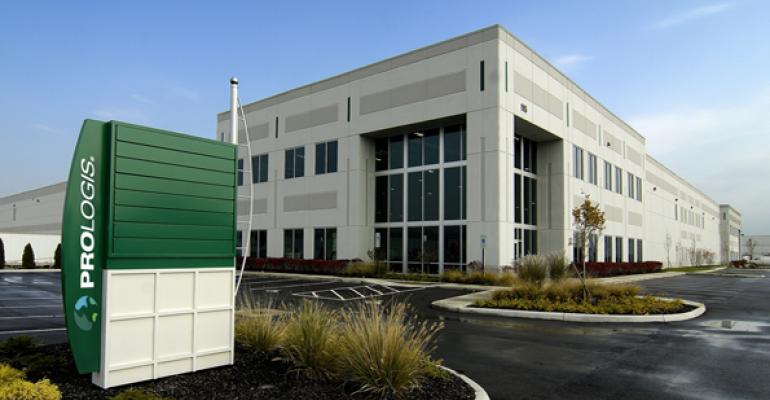E-commerce has finally hit adulthood, if measured by the launch of Amazon.com in 1995, but like any graduating teenager, its future is anyone’s guess—though most industrial experts predict there’s nowhere to go but up with the nation’s distribution markets.
What has been measured, and fully appreciated by owners, developers and brokers, is how e-commerce has affected the industrial market. Ordering goods online grew to a $225 billion industry in 2012, and not only has launched a number of dot.com firms which rely solely on distribution space for goods, many major firms now need space to handle dual supply chains for both brick and mortar and e-commerce.
San Francisco-based Prologis said in its recent “Shape of the U.S. Industrial Recovery” report that, thanks to both e-commerce and a much-slowed cycle, national industrial average rents are expected to rise 25 percent in the next four years. Of the buildings going up, more than one-third of the build-to-suit requirements are for handling e-commerce needs, according to the report.
However, though it’s agreed e-commerce has a large hunger for industrial space, it’s still not clear how everything will play out, says Chris Caton, vice president and head of Prologis Research. The reason for the uncertainty, he says, is a problem that’s plagued technology since its inception—compatibility.
“You’ve got large companies like Walmart, Sears, Best Buy or even Victoria’s Secret, and though they are all moving toward using e-commerce more, none of them have the same supply chain organization,” Caton says. “There’s just no common thread to how to tackle e-commerce, there’s a lot of questions that can be answered in different ways: Do you want to be within a certain percentageof the population within one-day shipping time? Or find property that’s cheap and has room for enough parking for the workforce you need? Should you build new or reuse? There are so many requirements that go into the e-commerce model.”
The properties need more parking than a typical warehouse because more people are needed to pick out SKUs. Other considerations include how many mezzanine levels can be used, how many dock doors are needed, the closeness to rapid shipping methods and how much space can handle reverse logistics (returns). “The main risk of doing these properties in a unique way is the reuse value, you can’t build it so a normal warehouse user won’t want it afterward,” Caton says. “There are even new lease considerations, such as adding in clauses to remove the mezzanines if the tenant leaves. At this point the market isn’t bending over backward for e-commerce needs, but it’s on the upswing.”
Aaron Ahlburn, director of industrial research with Jones Lang LaSalle, says he doesn’t predict much reuse of current stock for e-commerce. The added requirement, along with the need for high-powered infrastructure, has limited reuse of old space, he says. “A lot of the companies like Amazon just can’t find compatible space, that’s why they want new buildings,” he says. “It’s really fueled the build-to-suit market, and one of the other critical points is having the right supply in the right market.”
As the Internet sales tax is more accepted by various states and deals are worked out with online retailers, there will be continued expansion, Ahlburn says, not just in California but also secondary markets. “I think you’re seeing the retailers still experimenting with their supply chains,” he says. “You first saw it in the Midwest, where they wanted to be close to the major air cargo carriers, and now you’re going to see the moves toward reducing the shipping to get closer to one-day or same-day.”
Matt McGregor, a senior vice president with Colliers, says he also thinks it will be easier to build new distribution centers than convert older properties. Firms such as Staples, Apple, Walmart and Dell trail Amazon, as the top five companies in e-commerce sales, by a wide margin, and they’re going to keep trying to catch up, he says. Plus, there is an astounding amount of competition from online-only firms such as NewEgg.com, Buy.com, Overstock.com, Shoebuy.com and even Netflix that don’t have to maintain brick-and-mortar supply chains to compete, McGregor says.
“The snowball has picked up a massive amount of speed and growth, and I don’t see anything stopping it,” he says. “These firms that strictly focus online are seeing growth patterns that we’re just not used to. We used to do 10-year lease deals for a certain amount of space with retailers without concern, now they’re seeing 20 percent growth per year.”
However, he says he sees rent growth as likely to be only at about 4 percent per year, a number that’s positive but not as optimistic as Prologis. “I still think you’re going to be looking at consolidation and fewer companies out there, e-commerce won’t change the absorption numbers. There will be notable improvement in big-box buildings, but not as much in the properties less than 300,000 sq. ft.”

